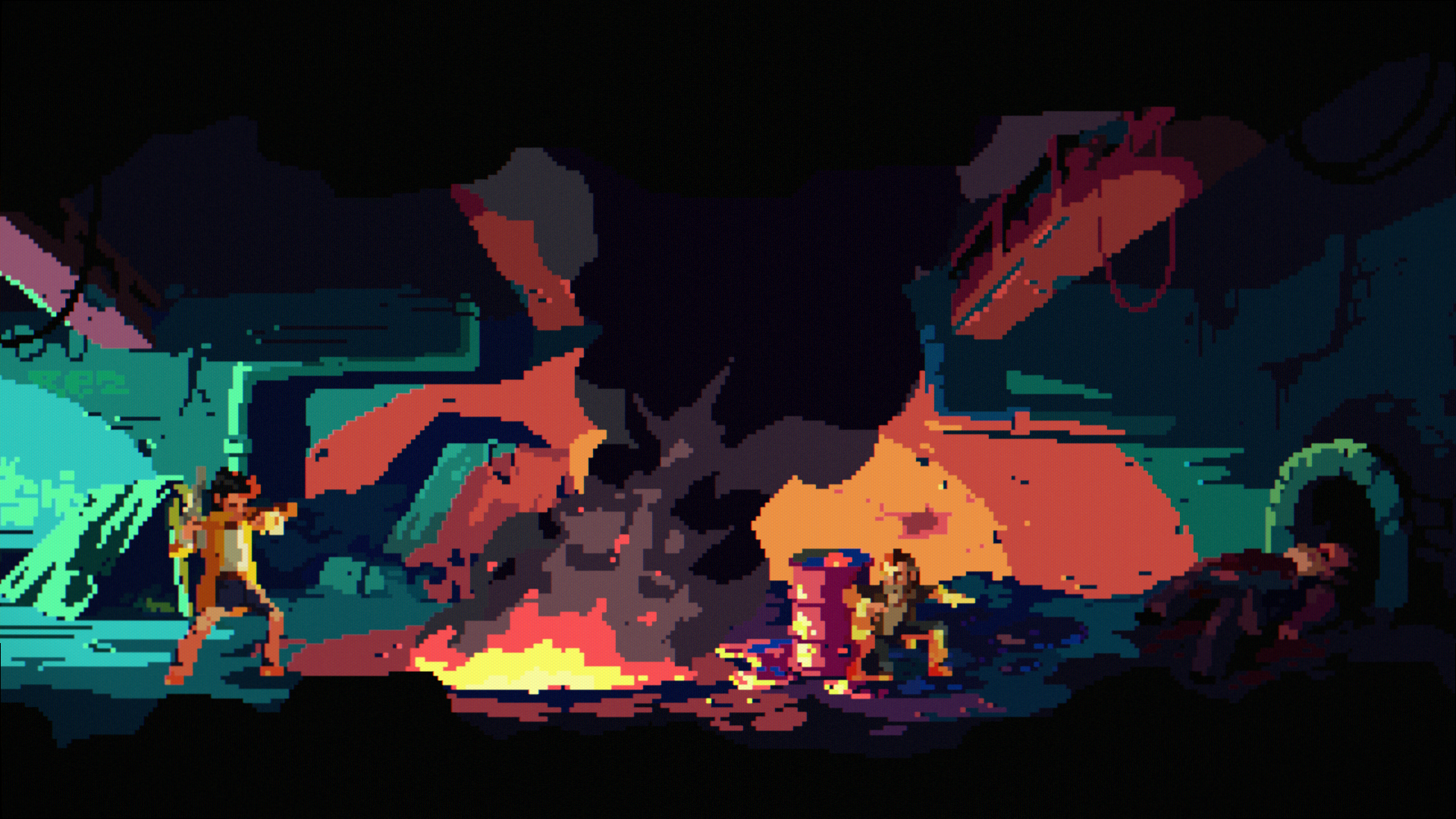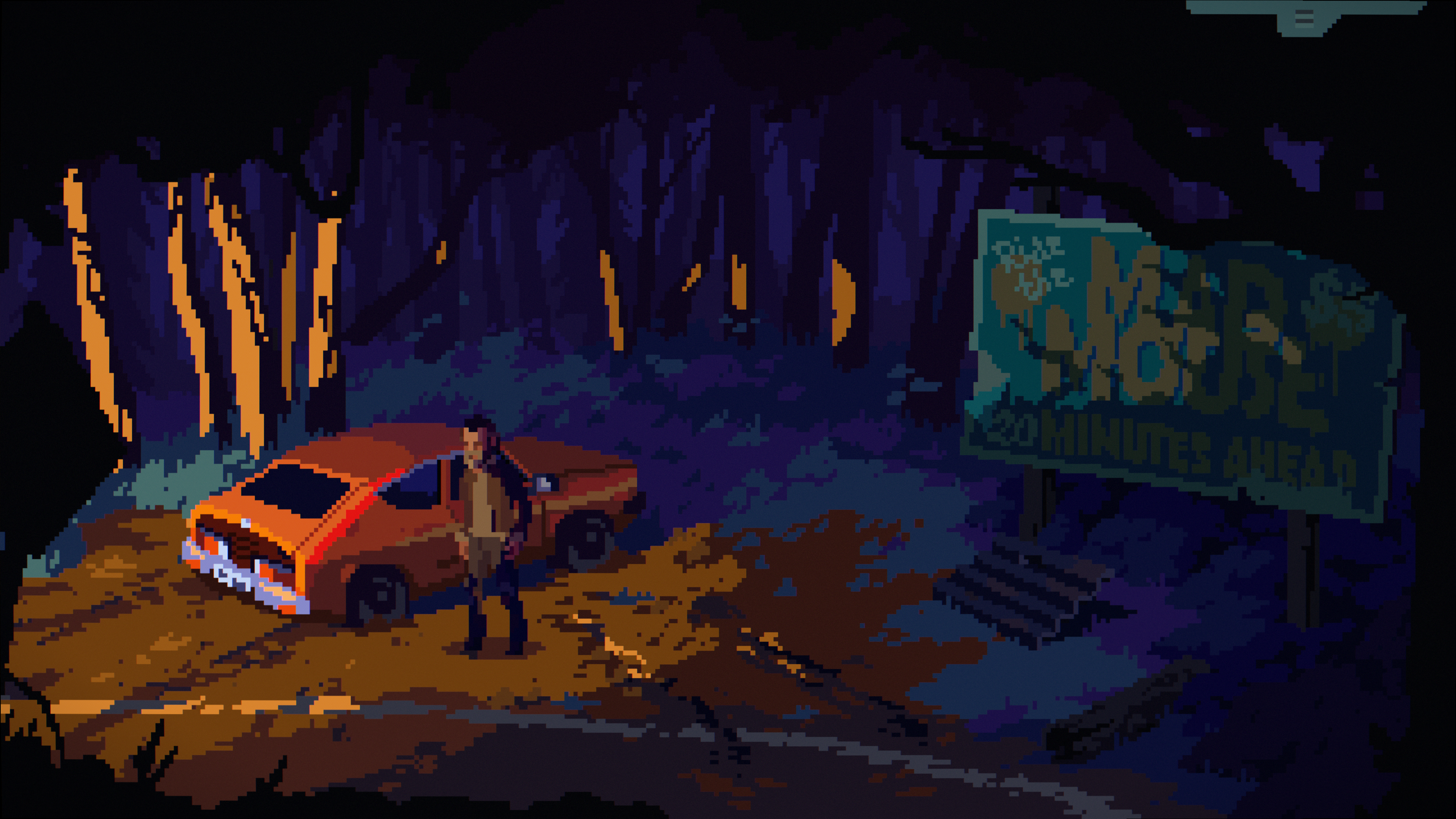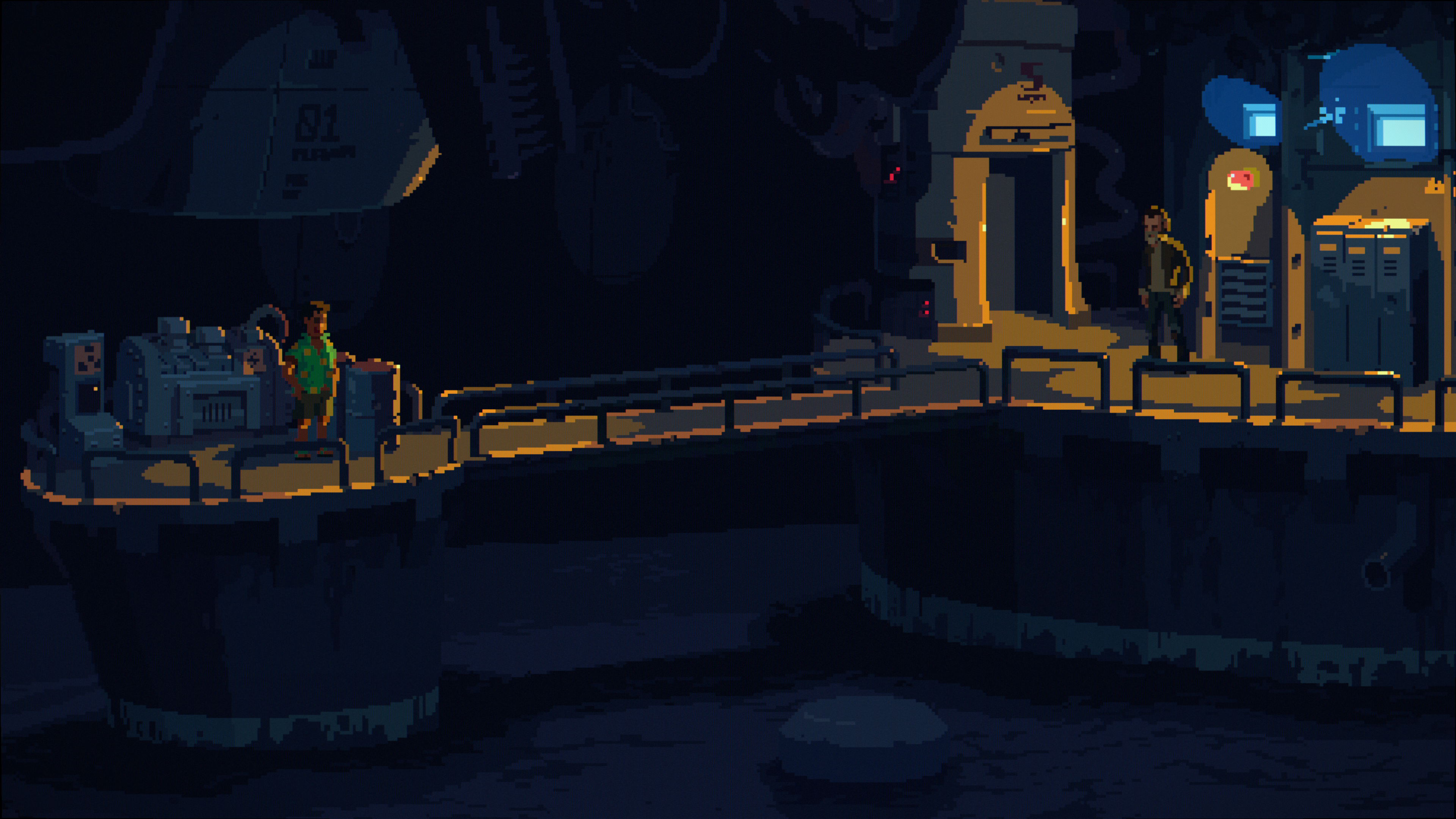With a more traditional side-on pixel art presentation, you might assume that The Drifter takes a more nostalgic approach to its take on the point-and-click adventure than, say, Nirvana Noir. Of course, given how synonymous Lucas Arts games like Monkey Island were with the genre, they still had some undeniable influence on how Dave Lloyd of the two-person indie team Powerhoof got interested in making games in the first place.
"I was making little point-and-click adventures back in the early 2000s, and I'd always made comedy ones because that was just what you kind of remember as a kid growing up with stuff like Monkey Island and Day of the Tentacle," he tells me. "But [for The Drifter], we weren't really drawing inspiration from old adventure games, in fact, it's something that I was trying to avoid as much as possible. It's trying to be more modern for people who necessarily haven't grown up playing those games."
Describing itself as a pulp adventure thriller, The Drifter has a faster, punchier pace than a typical adventure game, especially when it opens with your titular protagonist Mick Carter waking from a boxcar to witness a murder before he escapes from gunfire, only to wind up getting chained down in a reservoir to drown. A lot more adrenaline-pumping than your usual inventory-puzzling and chatting to NPCs for clues, though that does still exist.

A novel influence
"I was definitely influenced a lot more by thriller novels and films than by other games," says Dave. From the voiced dialogue, it's also evident that this is a game set in Australia, the fictional city featuring the kind of red brick architecture that you'll find in the developer's home of Melbourne. While it's something of a rarity to see Australian representation in a game, the setting was to keep everything grounded.
"I wanted the character to feel like a real person, and I think if I made them American, I feel like I wouldn't be able to know whether they'd feel grounded," Lloyd explains. "I also really like the new wave of Australian cinema and Ozploitation, when people came and got funding to make schlocky B-movies."

The Drifter may be the developer's first narrative game as a commercial release, as its previous titles are more arcade-like, couch co-op affairs, but the game's origins had come from a game jam in 2017 when in just five days, Dave and studio partner and art director Barney Cumming made Peridium, a short point-and-click adventure game that took a more horror thriller vibe than the genre's more typical light and comedic mould.
"I was really shocked at how much impact I was able to get just with setting up the scene with some writing and having the music and audio set up to be really pumping, adding layers of tension, and having gritty art with a lot of low colour and high contrast," Dave explains. "When we watched Let's Play videos, players would start panicking and clicking really fast, even though it's not an action game. Just seeing that kind of reaction made me really want to do something at full scale."
Daily design news, reviews, how-tos and more, as picked by the editors.
A lot of the design around Peridium has carried over to The Drifter, including the PowerQuest, a tool for making 2D adventure games in Unity that Dave made and has shared with the community.
"What got me into making games in the first place was a really old tool called Adventure Game Studio, which people are still using, because it makes it so easy to jump in and just start telling a story in this genre," Dave says. "So that's kind of what I wanted to bring to Unity. I wanted to have that workflow that's just really streamlined and enjoyable to use, and you still got that power that you have with Unity and importing, if you want to chuck in some 3D high-res shader art."

Pixel art nostalgia
Powerhoof is, however, keeping its aesthetic distinctly pixel-focused and crunchy, which Barney Cumming has spent time experimenting with, with inspiration harking back even earlier computer games with more graphical constraints.
"Some really old PC games had only 16 colours where the artists had to really rely on some really interesting colour choices because they'd have a colour red and if they wanted a darker red, there wasn't one, so they had to with purple, and you'd get these interesting looking scenes where you'd have purples, reds and greens all next to each other," Dave explains.
He adds: "Something that Barney did a lot was he might start with a boring dark blue and then push that into a funky green colour. So you really notice these colours that don't kind of look quite right, but they somehow all work together. It's something that I'm really happy with."
Just from the opening prologue that you can play from the Steam demo, you can appreciate how the low-res pixel aesthetic is executed, all the more impressive with its nighttime setting, where all the effects you see are hand-animated with some intentionally wobbly backgrounds and without any modern lighting effects.

The Drifter releases for PC on 17 July, with a Nintendo Switch release planned for 2025. Visit the Powerhoof website for more details.

Alan Wen is a freelance journalist writing about video games in the form of features, interview, previews, reviews and op-eds. Work has appeared in print including Edge, Official Playstation Magazine, GamesMaster, Games TM, Wireframe, Stuff, and online including Kotaku UK, TechRadar, FANDOM, Rock Paper Shotgun, Digital Spy, The Guardian, and The Telegraph.
You must confirm your public display name before commenting
Please logout and then login again, you will then be prompted to enter your display name.
